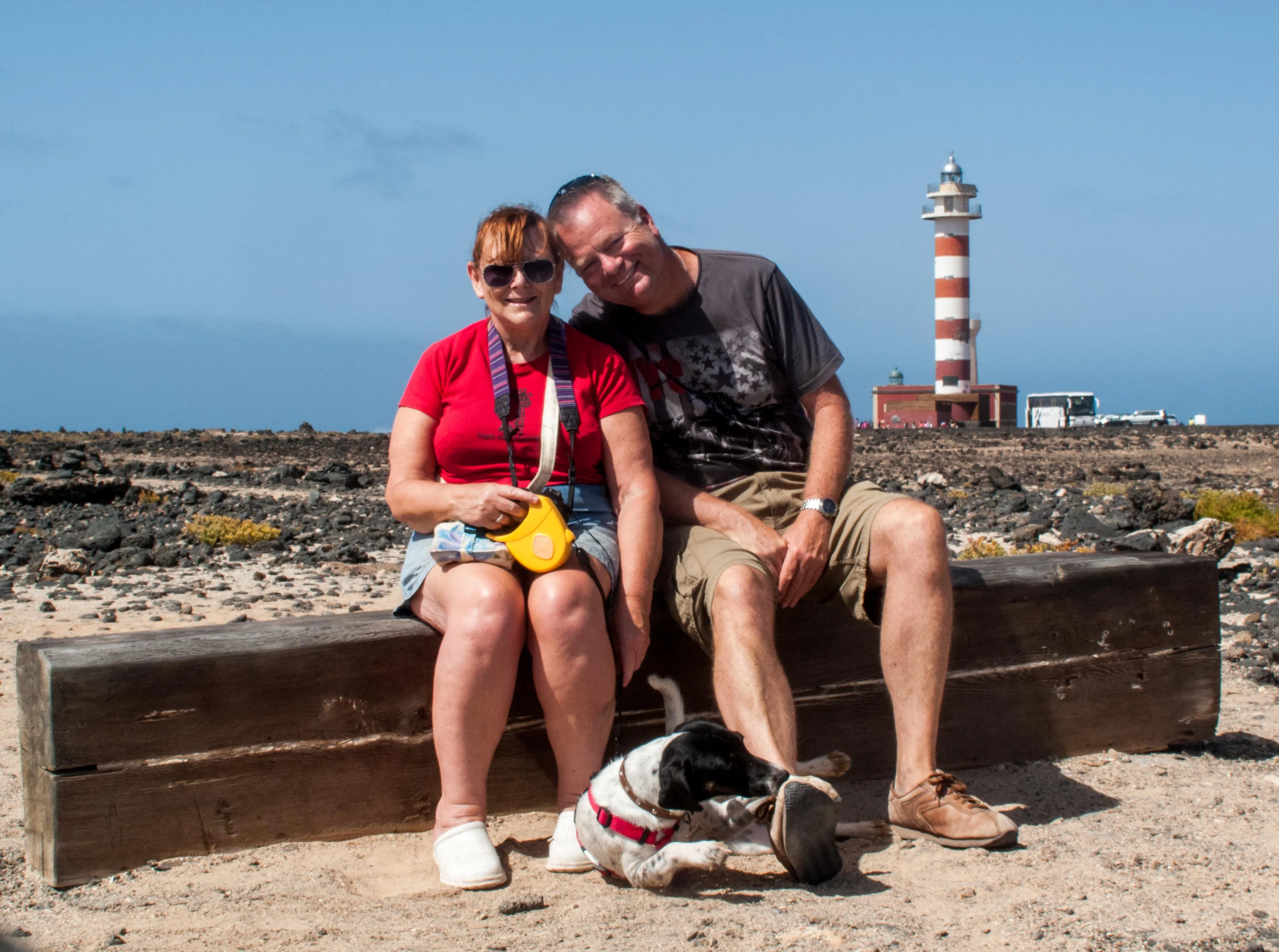Imagine a tiny coastal hamlet nestled on the western shores of Fuerteventura. That’s Los Molinos, a hidden gem waiting for you to discover. With fewer than twenty residents, this charming village offers a peaceful escape from the bustling tourist spots.
Los Molinos boasts a beautiful sandy beach that appears at low tide, perfect for a relaxing day by the sea.

Two lovely restaurants serve delicious local cuisine. If you’re feeling adventurous, explore the sea caves that become accessible during extremely low tides.
Los Molinos is more than just a pretty beach. It’s a place steeped in history, with a shrine dedicated to the patron saint of the sea. The village’s name, “The Windmills,” hints at Fuerteventura’s agricultural past. As you wander through this quaint hamlet, you’ll feel like you’ve stumbled upon a secret slice of paradise.
Exploring Los Molinos

Los Molinos is a quiet village on Fuerteventura’s western coast. This small fishing village offers stunning landscapes, beautiful beaches, and unique caves to explore.
The Charm of a Fishing Village
Puertito de Los Molinos, often called just Los Molinos, is a tiny coastal hamlet. You’ll find only a few simple homes and a few restaurants here. The village’s name means “Small Harbour of the Windmills,” hinting at its farming past.
When you arrive, you will see the almost dry Barranco de Los Molinos riverbed, which adds to the area’s rugged charm. The village keeps its traditional feel, making it a perfect spot to escape the busier tourist areas.
To taste local life, try the fresh fish at one of the village restaurants. You’ll enjoy authentic Canarian flavours while taking in the peaceful seaside views.

Visiting Puertito de Los Molinos
You’ll drive about 8 km from the main road to reach Los Molinos. The journey is a treat, with scenic views of Fuerteventura’s landscape.
Once there, you can explore the small cove where the village sits. Near the stream, look out for ducks and even a peahen. It’s a tranquil spot, perfect for a relaxing day out.

The real draw of Los Molinos is its caves. These can only be reached at low tide, so plan your visit carefully. Check the tide times before you go to avoid disappointment. When the tide is right, you can walk across to explore these unique sea caves.
Los Molinos Beach
Los Molinos Beach is a hidden treasure. It’s less crowded than many of Fuerteventura’s beaches, offering a more peaceful experience.
The beach changes with the tides. At low tide, a wide stretch of sand is perfect for sunbathing or beach games. As the tide comes in, the beach gets smaller, creating a cosy cove feeling.

Summer brings calmer seas, ideal for swimming. In winter, the waves pick up, making it a popular spot for surfing. Always be careful of strong currents and follow local safety advice.
Remember to bring everything you need, as there are few facilities here. This unspoilt nature is part of what makes Los Molinos Beach so special.
Natural Wonders and Landscapes
Los Molinos boasts stunning coastal scenery with dramatic cliffs and hidden caves. The unique ecosystem supports diverse plant and animal life adapted to the rugged terrain and maritime climate.
The Cliffs and Caves at Low Tide
When the tide recedes, a magical world emerges at Los Molinos Beach. Towering cliffs reveal secret caves and rock formations sculpted by the sea. You can explore these hidden grottoes, but timing is crucial. Check tide tables before venturing out.
The caves are only accessible during a particularly low tide. Inside, you’ll find smooth walls worn by centuries of waves. Sunlight filters through openings, creating an ethereal glow. Keep an eye out for colourful marine life in tidal pools.
Be careful as you navigate the rocky shore. Wear sturdy shoes with good grip. The tide can rise quickly, so don’t stray too far into the caves.
Unique Flora and Fauna
Los Molinos’ harsh coastal environment supports hardy plants and animals. Succulents cling to cliff faces, their thick leaves storing precious water, and salt-tolerant shrubs dot the landscape, providing shelter for small creatures.
Seabirds wheel overhead, nesting in rocky crevices. You might glimpse ospreys diving for fish or shearwaters skimming the waves. Look for bright anemones, darting fish, and scuttling crabs in tidal pools.
The area’s biodiversity is fragile. Stick to marked paths and don’t disturb plants or animals. Take only photos and leave only footprints to help preserve this special ecosystem for future visitors.
Historical Insights
Los Molinos has a rich history tied to Fuerteventura’s agricultural past. Windmills played a crucial role in the island’s economy and culture. Traditional practices and local cuisine reflect the area’s unique heritage.
The Windmills of Fuerteventura

Windmills, called ‘Molinos’ in Spanish, dotted the landscape and were vital to Fuerteventura’s development. They ground cereals into flour and gofio, a toasted grain flour. The island’s constant winds made these mills highly efficient.
The Molino de Antigua is a famous example. It’s now a museum where you can learn about milling techniques. Stone was the key material for grinding. The mills’ sails caught the wind, turning large stone wheels inside.
In Tefia, you’ll spot restored windmills that show how they once looked. These mills are now protected as cultural heritage sites.
Old Airfield

During the Second World War, the Spanish decided they needed a military airfield to protect the Canary Islands. They built it on flat ground just outside Los Molinos, well out of the range of naval guns. There were a couple of supply flights every week, and after the war, the facility was turned over to civilian use. Iberia provided regular services from the mainland.
By the 1950s, the authorities decided they needed to move to a new airport. This was partly because getting here involved a long trip on dirt tracks, but more importantly, Fuerteventura is known for strong winds. With all the hills around here, the wind was unpredictable, causing many hairy landings.
How bad the winds can be was demonstrated years after moving the airport. In 1972, a group of paratroopers were caught in the wind while doing a training exercise, and they lost control of their parachutes. Thirteen of them died. They are remembered on a memorial there.
Los Molinos Reserviour

Just before you drop down the hill to Los Molinos is a track on the left that takes you to one of the few reserviours on Fuerteventura.
The water is only used for agriculture. It is home to many waterfowls.
Traditional Practices and Cuisine
When you visit Los Molinos, you’ll get a taste of old Fuerteventura. Gofio, made in the windmills, is still a staple food. It’s used in many dishes and even mixed with milk as a drink.
Farmers grew cereals like wheat and barley. They worked the land using simple tools, some of which are displayed at the Los Molinos Interpretation Centre.
Fishing was also important in coastal areas. The village of Los Molinos has a small harbour, and locals still catch fish using traditional methods.
Try dishes made with locally grown ingredients. Many recipes have been passed down for generations, and you’ll find that food here connects you to the island’s history.
Visitor Information
Los Molinos offers unique experiences for travellers. Before your trip, it is key to know the best times to visit and how to get there.
Best Times to Visit
Autumn is a lovely time to explore Los Molinos. The weather is mild and crowds are smaller. Summer brings warm days perfect for the beach but can get busy.
Winter has cooler temperatures but still plenty of sun, ideal for hiking and sightseeing. You may also see some spectacular waves. Spring offers pleasant weather and blooming wildflowers.
For cave exploring, plan your visit around low tide. Check tide tables before you go. The autumn equinox often brings very low tides, making it easier to reach the sea caves.
Public Transport and Accessibility
Getting to Los Molinos by public transport can be tricky. Buses are limited, so hiring a car is your best bet for easy access.
If you’re set on public transport, take a bus to Betancuria. From there, you’ll need to arrange a taxi to Los Molinos.
Once in the village, most sights are within walking distance. The beach and caves require a short walk from the centre.
Remember, the path to the caves can be slippery. Wear sturdy shoes and take care when wading through water at low tide.

I have been holidaying in Fuerteventura for over 30 years and have been living here full time since 2013. I have a popular Youtube channel related to this website called JP in Fuerteventura




Leave a Reply